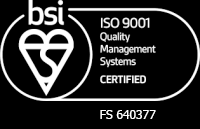Lean Six Sigma is a powerful methodology that combines: Lean and Six Sigma.
Lean focuses on waste reduction and process improvement, while Six Sigma focuses on reducing variation and defects. Together, they provide a comprehensive framework for improving quality, reducing expenses, and increasing customer happiness.
For professionals looking to enhance their skills and advance their careers, Lean Six Sigma certification is a valuable asset. In this article, we will explore what Lean Six Sigma certification is, why it is important, and how to obtain it.
What is Lean Six Sigma Certification?
Lean Six Sigma certification is a program that provides individuals with the knowledge and skills needed to implement Lean Six Sigma methodologies in their organisations. It is designed for professionals who are interested in improving their skills in process improvement, solving problems, and project management. The certification is awarded to those who have successfully completed a Lean Six Sigma training program and passed an exam.
Why is Lean Six Sigma Certification Important?
There are several reasons why Lean Six Sigma certification is important. First, it provides individuals with a recognised credential that demonstrates their expertise in Lean Six Sigma methodologies. This can be valuable when seeking job opportunities or advancing within an organisation.
Second, Lean Six Sigma certification provides individuals with the knowledge and skills needed to improve processes and reduce expenses. By implementing Lean Six Sigma methodologies, organisations can become more efficient and effective, which can lead to increased profitability and customer happiness.
Finally, Lean Six Sigma certification is important because it provides individuals with a common language and methodology for solving problems. This can help teams work together more effectively, communicate more clearly, and achieve better results.
How to Obtain Lean Six Sigma Certification
Your dedicated BrookConsult lean consultant will provide your business with all the necessary tools to eliminate non-value-added activities, reduce more waste, save money and, more importantly, efficiently execute your business strategies.
Choose a Certification Level: Lean Six Sigma certification is typically offered at four different levels: Starting with Yellow Belt, Green Belt.
Then you can move onto Black Belt, and Master Black Belt. The level you choose will depend on your experience and career goals.
Complete Training: To obtain Lean Six Sigma certification, you will need to complete a training program that covers the relevant methodologies, tools, and techniques. Training programs can be completed online or in-person and can range from a few days to several weeks.
Conducting a Six Sigma Project: For Green and above, you will be required to conduct a Six Sigma Project to obtain your practitioner certification. The project will test and prove your knowledge and understanding of Lean Six Sigma methodologies and your ability to implement Six Sigma into your workplace.
Maintain Certification: To maintain your Lean Six Sigma certification, you will need to complete continuing education requirements and stay up to date with the latest methodologies and tools.
Conclusion
Lean Six Sigma certification is a valuable asset for professionals who are interested in improving their skills in process improvement, solving problems, and project management. It provides individuals with a recognised credential that demonstrates their expertise in Lean Six Sigma methodologies and can help them advance their careers.
If you are interested in obtaining Lean Six Sigma certification, choose a certification level, complete a training program, pass an exam, and maintain your certification through continuing education.






